-
Notifications
You must be signed in to change notification settings - Fork 15
Types and Programming Languages Chapter 11 Simple Extensions
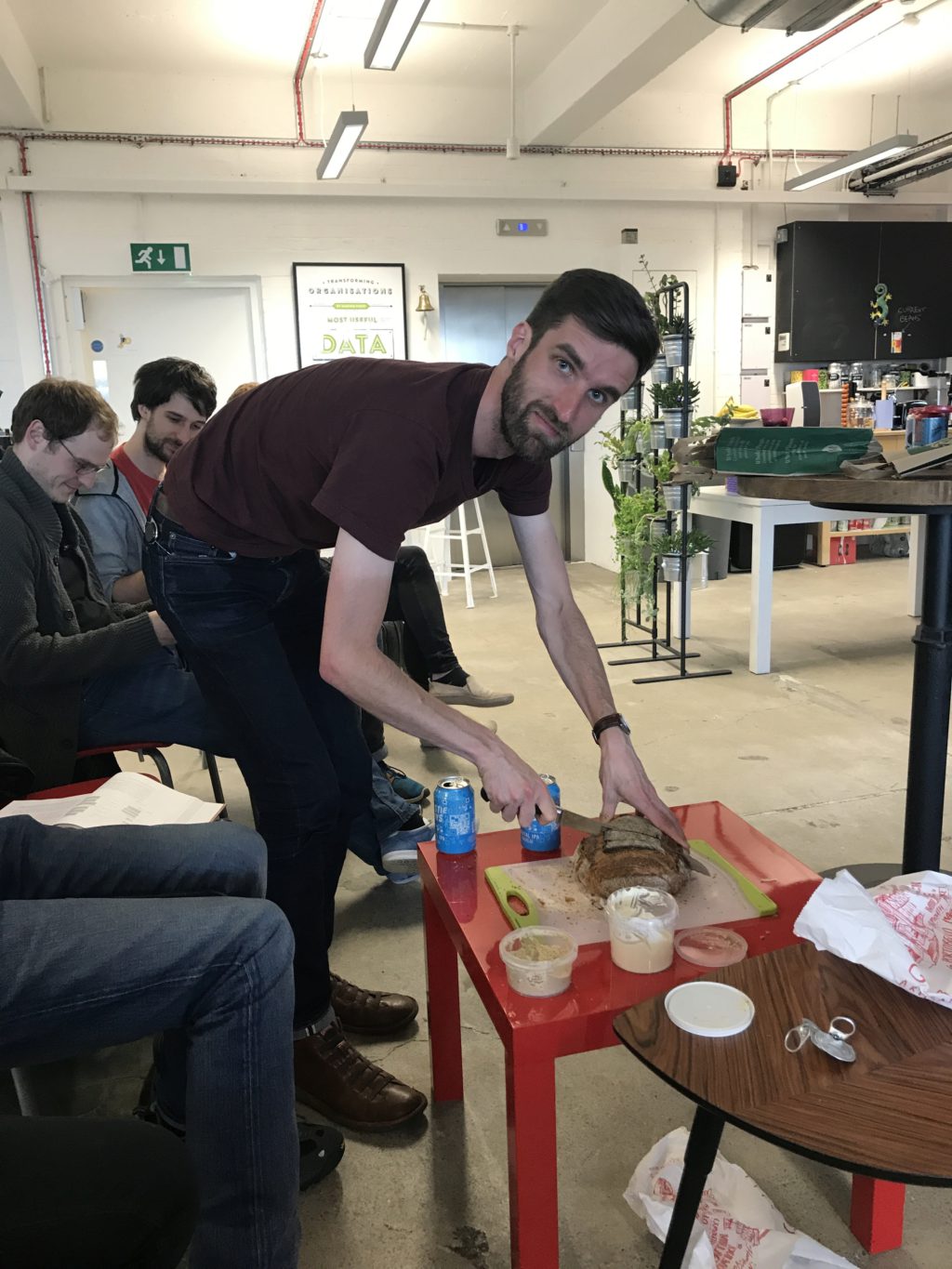
We began the meeting as per tradition by admiring the variety of bread and dips provided by @urbanautomaton and @tomstuart and helping ourselves to beverages provided by @leocassarani.
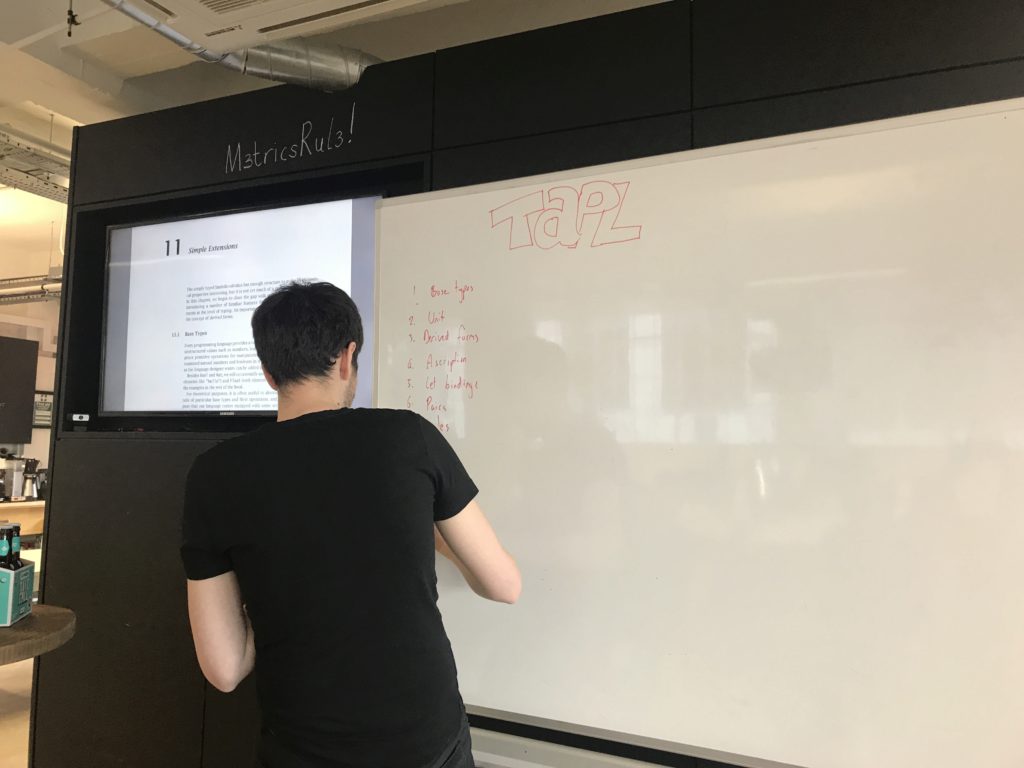
We began by listing the various sections of the chapter as a lot of us has struggled to get through it all beforehand and discussed our plan of attack for the meeting:
- Should we steam ahead, attempting to tackle as much as possible?
- Should we pick a predefined endpoint (e.g. cover up to "Pairs") and aim only for that?
- Should we pick specific sections of interest?
We decided that, as each section built atop the last and each section introduced a valuable new concept, we should steam ahead but with the full expectation that we wouldn't finish the material in a single meeting and that we may need to carry over into a second one.
We began by breezing past "base types" and onto a discussion of the new Unit type and its use in the sequencing derived form t1; t2.
We discussed the expanded version of sequencing:
t1; t2 = (λx:Unit . t2) t1
And pondered why x had to be type Unit, e.g. what if t1 returned a Bool or Nat. We assured ourselves that this would count as a type error in this language as calculating a value and not using it is pointless (particularly as we don't yet have side-effects).
We then tackled type ascription and expressed it in terms of abstraction and application:
t1 as T = (λx:T . x) t1
Which we all thought was rather nifty.
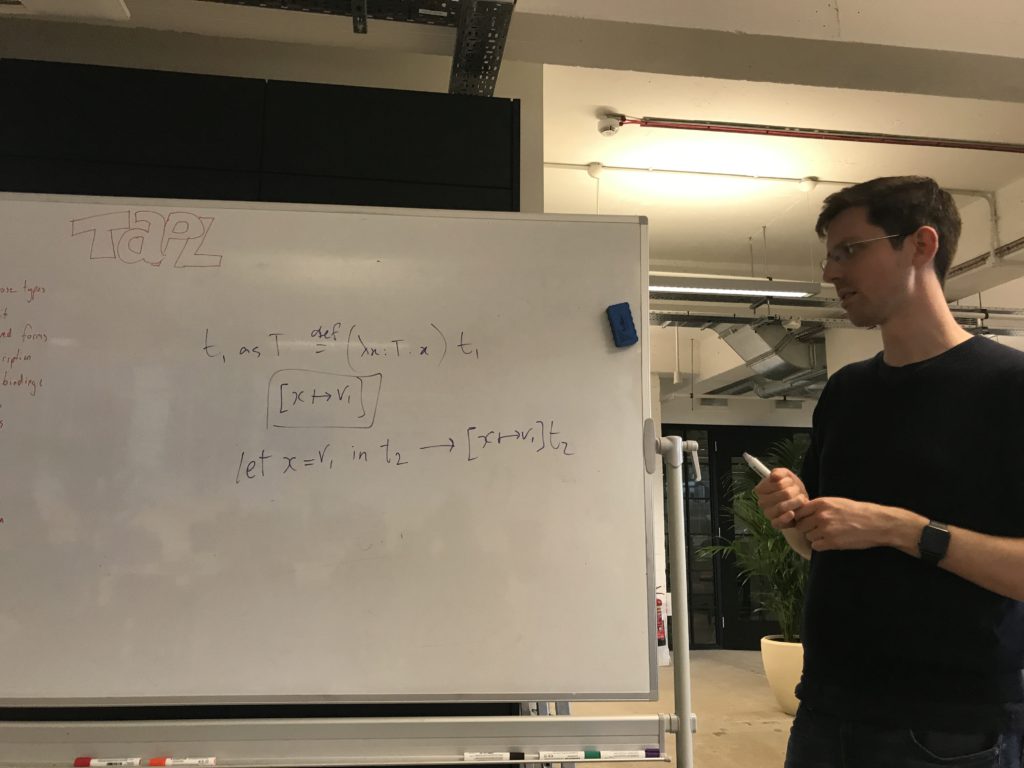
We then moved onto let and explained what it does (e.g. similar to Clojure's let) and Leo derived some typing rules for it:
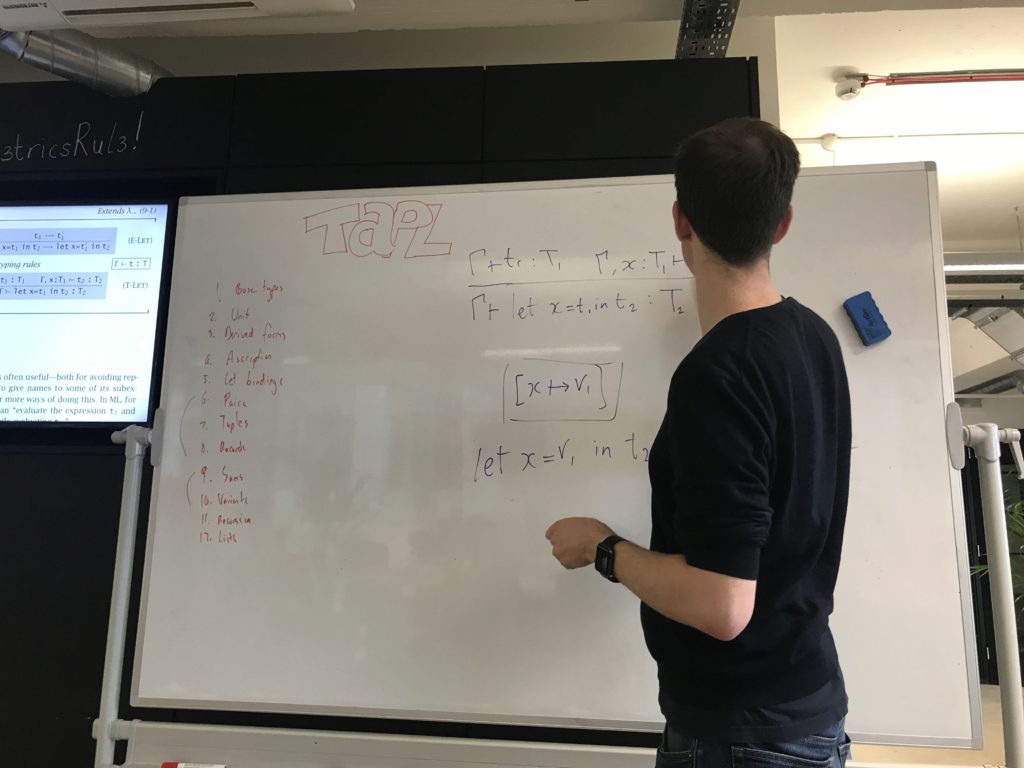
We then attempted to express let as a derived form and immediately ran into an issue:
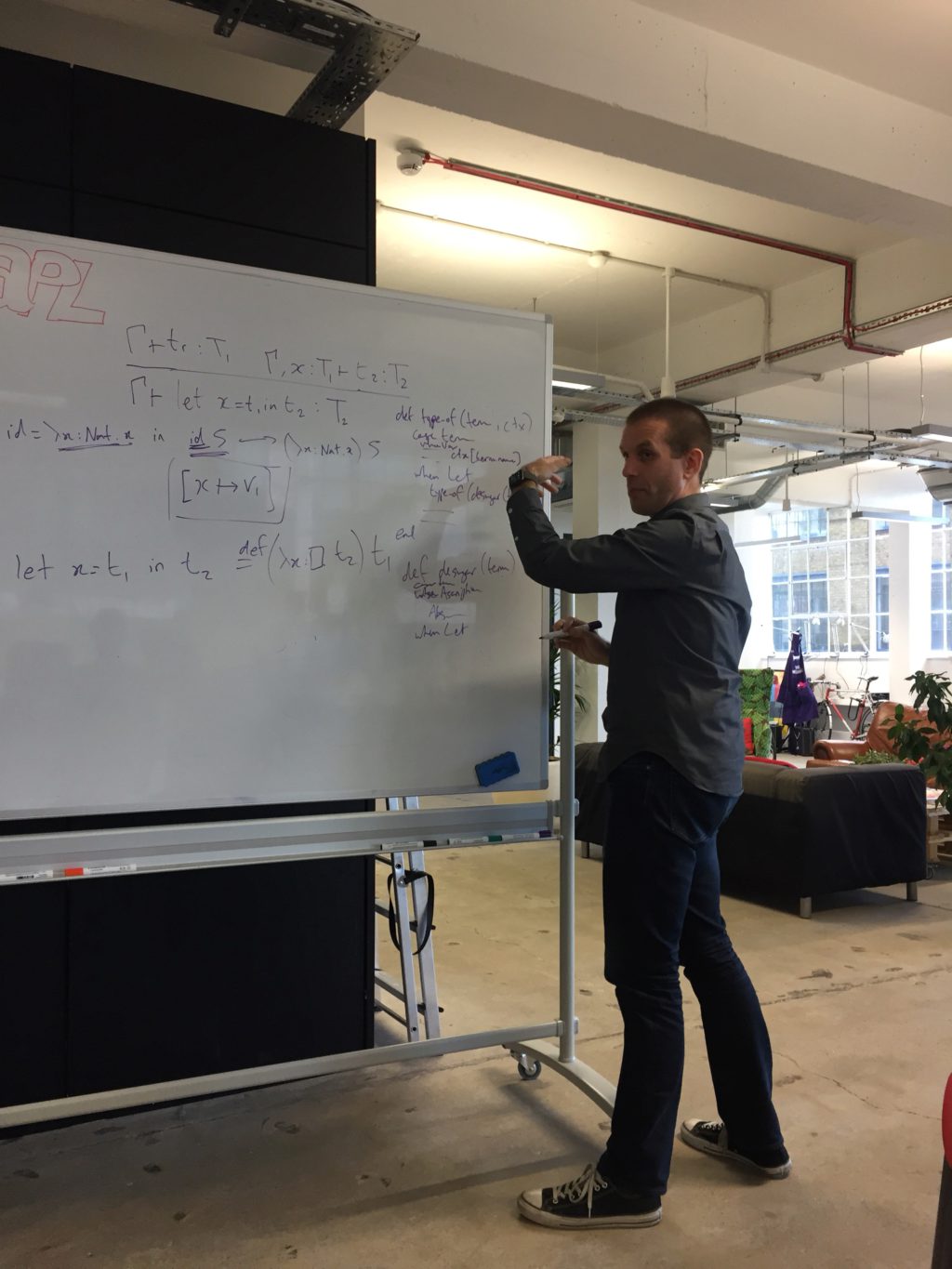
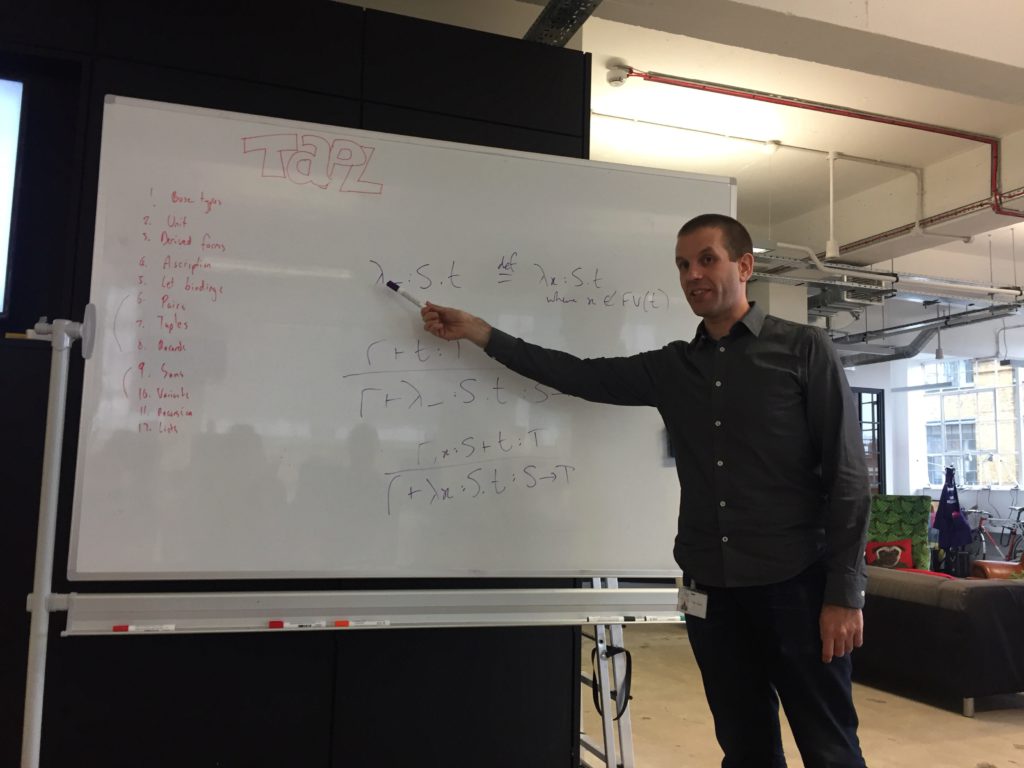
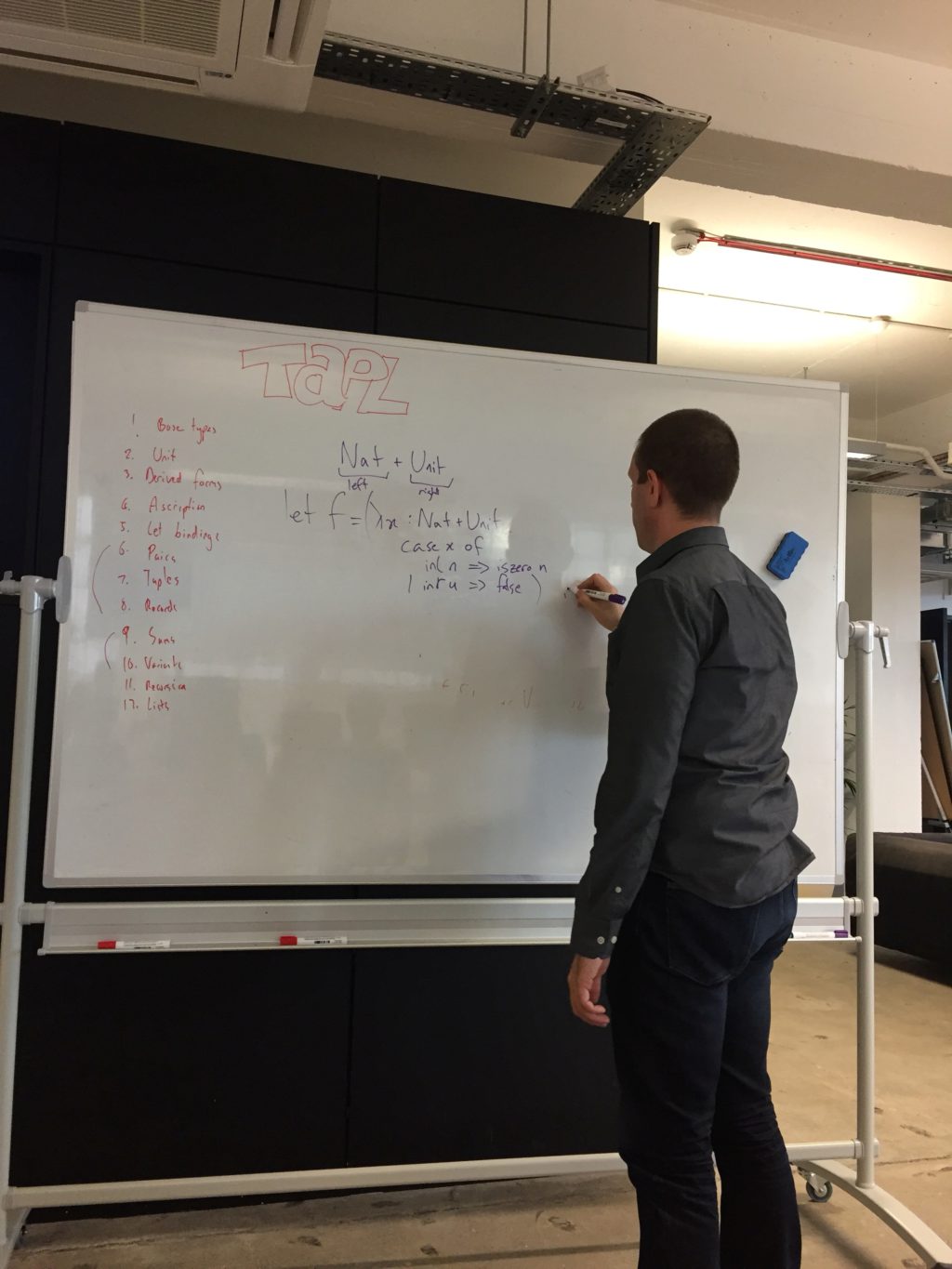
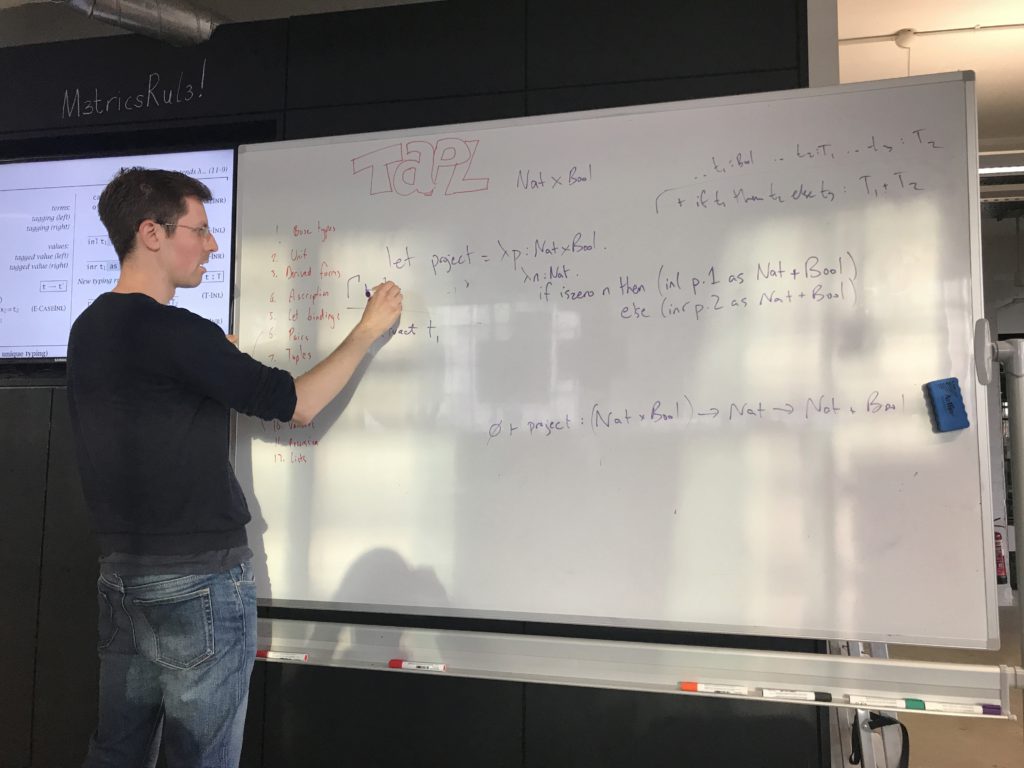
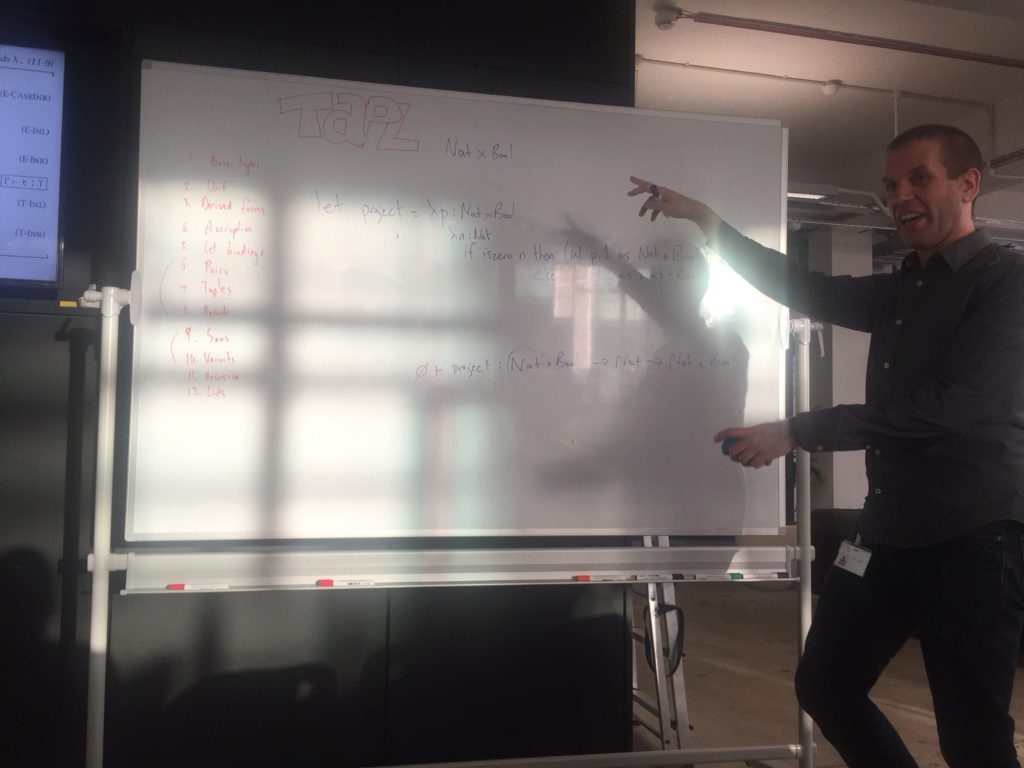
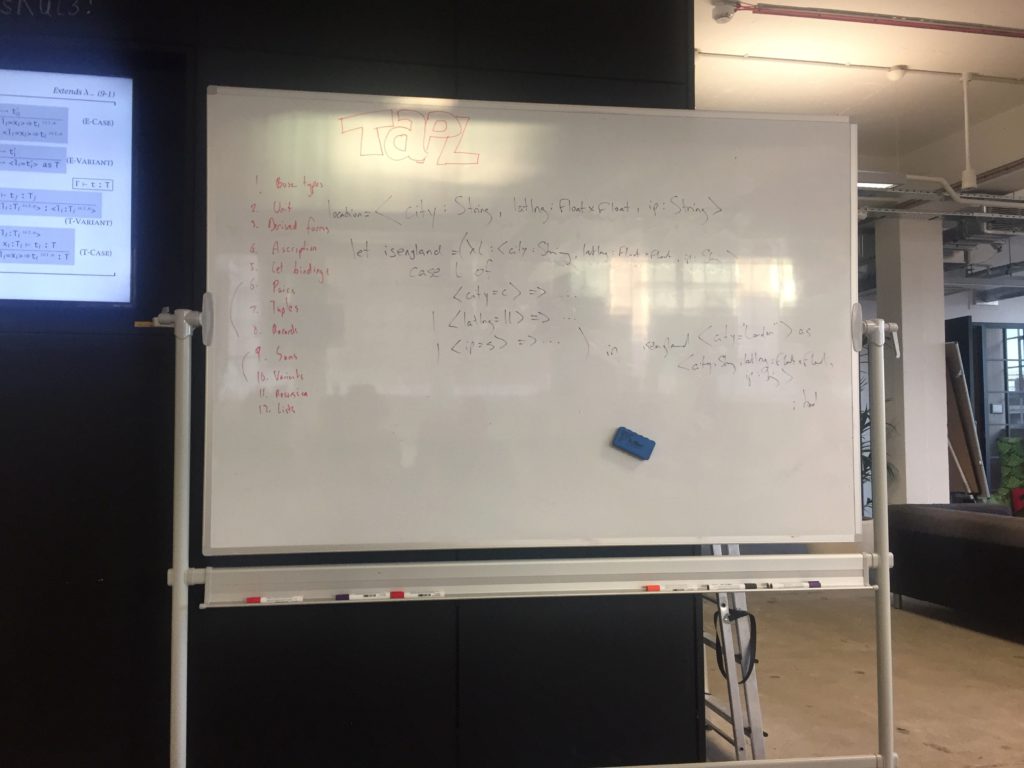
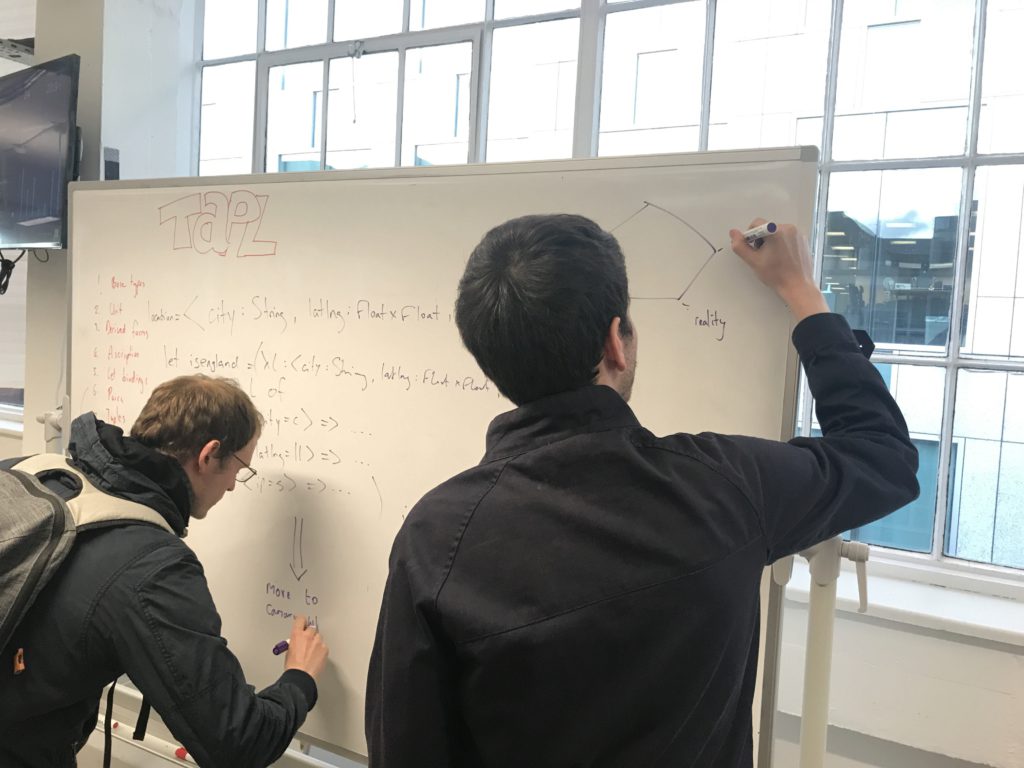
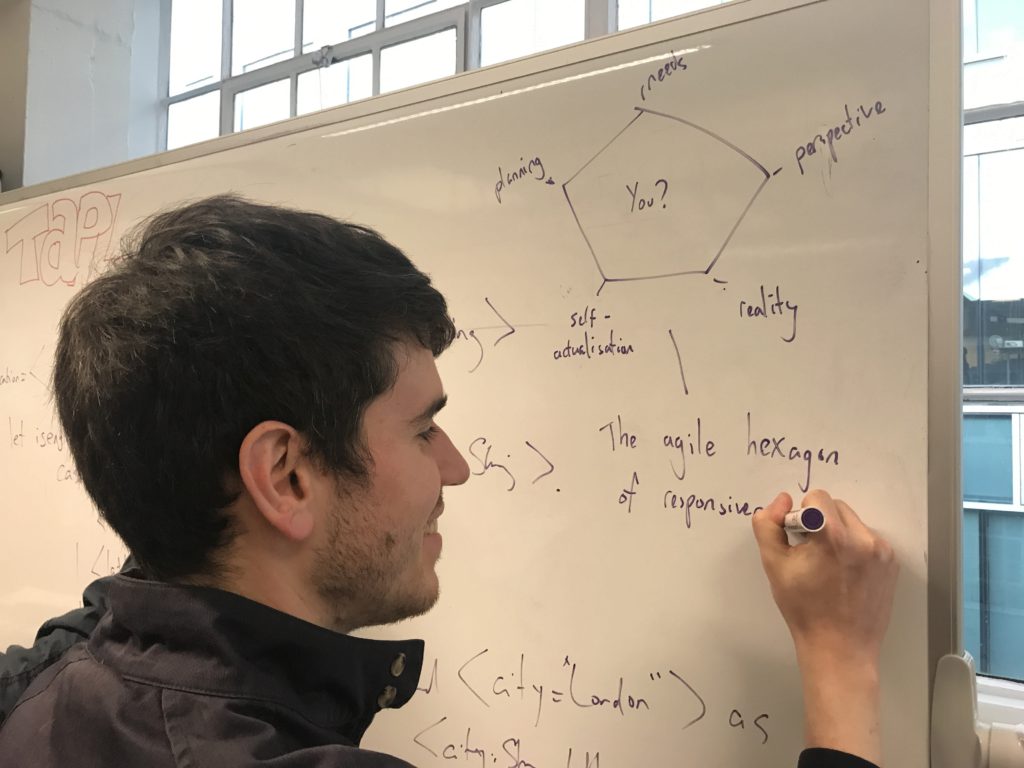
Thanks to Leo and Geckoboard for hosting and buying drinks, to Simon and Tom for buying snacks, Chris for organising the meeting and Tom for leading the discussion.
- Home
- Documentation
- Choosing a Topic
- Shows & Tells
- Miscellaneous
- Opt Art
- Reinforcement Learning: An Introduction
- 10 Technical Papers Every Programmer Should Read (At Least Twice)
- 7 More Languages in 7 Weeks
- Lua, Day 1: The Call to Adventure
- Lua, Day 2: Tables All the Way Down
- Lua, Day 3
- Factor, Day 1: Stack On, Stack Off
- Factor, Day 2: Painting the Fence
- Factor, Day 3: Balancing on a Boat
- Elm, Day 1: Handling the Basics
- Elm, Day 2: The Elm Architecture
- Elm, Day 3: The Elm Architecture
- Elixir, Day 1: Laying a Great Foundation
- Elixir, Day 2: Controlling Mutations
- Elixir, Day 3: Spawning and Respawning
- Julia, Day 1: Resistance Is Futile
- Julia, Day 2: Getting Assimilated
- Julia, Day 3: Become One With Julia
- Minikanren, Days 1-3
- Minikanren, Einstein's Puzzle
- Idris Days 1-2
- Types and Programming Languages
- Chapter 1: Introduction
- Chapter 2: Mathematical Preliminaries
- Chapter 3: Untyped Arithmetic Expressions
- Chapter 4: An ML Implementation of Arithmetic Expressions
- Chapter 5: The Untyped Lambda-Calculus
- Chapters 6 & 7: De Bruijn Indices and an ML Implementation of the Lambda-Calculus
- Chapter 8: Typed Arithmetic Expressions
- Chapter 9: The Simply-Typed Lambda Calculus
- Chapter 10: An ML Implementation of Simple Types
- Chapter 11: Simple Extensions
- Chapter 11 Redux: Simple Extensions
- Chapter 13: References
- Chapter 14: Exceptions
- Chapter 15: Subtyping – Part 1
- Chapter 15: Subtyping – Part 2
- Chapter 16: The Metatheory of Subtyping
- Chapter 16: Implementation
- Chapter 18: Case Study: Imperative Objects
- Chapter 19: Case Study: Featherweight Java
- The New Turing Omnibus
- Errata
- Chapter 11: Search Trees
- Chapter 8: Random Numbers
- Chapter 35: Sequential Sorting
- Chapter 58: Predicate Calculus
- Chapter 27: Perceptrons
- Chapter 9: Mathematical Research
- Chapter 16: Genetic Algorithms
- Chapter 37: Public Key Cryptography
- Chapter 6: Game Trees
- Chapter 5: Gödel's Theorem
- Chapter 34: Satisfiability (also featuring: Sentient)
- Chapter 44: Cellular Automata
- Chapter 47: Storing Images
- Chapter 12: Error-Correcting Codes
- Chapter 32: The Fast Fourier Transform
- Chapter 36: Neural Networks That Learn
- Chapter 41: NP-Completeness
- Chapter 55: Iteration and Recursion
- Chapter 19: Computer Vision
- Chapter 61: Searching Strings
- Chapter 66: Church's Thesis
- Chapter 52: Text Compression
- Chapter 22: Minimum spanning tree
- Chapter 64: Logic Programming
- Chapter 60: Computer Viruses
- Show & Tell
- Elements of Computing Systems
- Archived pages